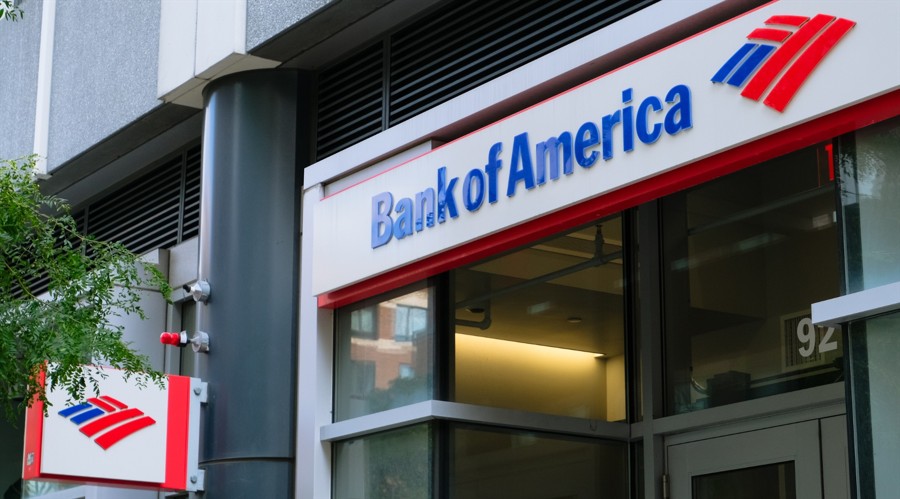Bank of
America must pay $540 million to the US Federal Deposit Insurance (FDIC) in a years-long
legal battle over deposit insurance assessments, a federal judge ruled Monday,
resolving a dispute that centered on how the bank calculated its risk exposure
following post-financial crisis regulations.
US District
Judge Loren AliKhan determined that Bank of America failed to properly report
its counterparty exposure as required by FDIC rules implemented after the 2008
financial crisis, but ordered the bank to pay significantly less than the
nearly $2 billion the agency had sought.
“After
reading the text of the 2011 rule and acting in good faith,” Bank of
America “should have been able to identify with ascertainable certainty
the standards it was expected to apply,” Judge AliKhan wrote in her March
31 decision, which was made public this week.
The FDIC
sued Bank of
America in 2017, claiming the second-largest US bank had understated its
counterparty exposure by reporting risks separately rather than combining them
at the “consolidated entity level” as required. This reporting
method, the agency argued, allowed the bank to avoid $1.12 billion in mandatory
deposit insurance assessments.
You may
also like: FDIC
Tightens Grip on Fintech Firms, Proposes Record-Keeping Rules for Banks
2011 FDIC Rule
The judge
rejected Bank of America’s argument that the rule was unclear or that the FDIC
had exceeded its authority. However, she ruled that some claims were
time-barred, limiting recovery to assessments from the second quarter of 2013
through the fourth quarter of 2014, plus interest.
“We
are pleased the judge has ruled and have reserves reflecting the
decision,” Bank of America spokesperson Bill Halldin said in a statement,
quoted by Bloomberg.
The dispute
stemmed from a 2011 FDIC rule that changed how banks report counterparty
exposures when calculating their mandatory contributions to the deposit
insurance fund. The measure required banks to combine exposures to affiliated
entities under a parent company as one consolidated risk measure rather than
treating them as separate exposures.
The FDIC
argued this change was necessary because the concentration of multiple
exposures could “significantly increase the institution’s vulnerability to
unexpected market events.” The agency uses these exposure calculations to
determine quarterly deposit insurance payments, with riskier institutions
required to contribute more.
How BofA’s Risk Reporting
Tactics Backfired
According
to court documents, Bank of America held approximately $1.2 trillion in US
deposits as of September 2016, including $700 million that were FDIC-insured.
The agency claimed the bank’s underpayment represented a “material”
amount for the government’s $81 billion insurance fund, which provides coverage
of up to $250,000 per depositor at insured banks.
Bank of
America had maintained that the dispute involved a technical disagreement over
a calculation that changed over time, and that the amount in question
represented a small fraction of its annual deposit insurance payments. The bank
denied it acted with intent to evade payments.
The FDIC
claimed Bank of America was the only financial institution to deliberately
disregard the rule, noting that another bank that had misinterpreted the
regulation later self-corrected its reporting.
The case is
FDIC v. Bank of America, 17-cv-36, U.S. District Court, District of Columbia.
Bank of
America must pay $540 million to the US Federal Deposit Insurance (FDIC) in a years-long
legal battle over deposit insurance assessments, a federal judge ruled Monday,
resolving a dispute that centered on how the bank calculated its risk exposure
following post-financial crisis regulations.
US District
Judge Loren AliKhan determined that Bank of America failed to properly report
its counterparty exposure as required by FDIC rules implemented after the 2008
financial crisis, but ordered the bank to pay significantly less than the
nearly $2 billion the agency had sought.
“After
reading the text of the 2011 rule and acting in good faith,” Bank of
America “should have been able to identify with ascertainable certainty
the standards it was expected to apply,” Judge AliKhan wrote in her March
31 decision, which was made public this week.
The FDIC
sued Bank of
America in 2017, claiming the second-largest US bank had understated its
counterparty exposure by reporting risks separately rather than combining them
at the “consolidated entity level” as required. This reporting
method, the agency argued, allowed the bank to avoid $1.12 billion in mandatory
deposit insurance assessments.
You may
also like: FDIC
Tightens Grip on Fintech Firms, Proposes Record-Keeping Rules for Banks
2011 FDIC Rule
The judge
rejected Bank of America’s argument that the rule was unclear or that the FDIC
had exceeded its authority. However, she ruled that some claims were
time-barred, limiting recovery to assessments from the second quarter of 2013
through the fourth quarter of 2014, plus interest.
“We
are pleased the judge has ruled and have reserves reflecting the
decision,” Bank of America spokesperson Bill Halldin said in a statement,
quoted by Bloomberg.
The dispute
stemmed from a 2011 FDIC rule that changed how banks report counterparty
exposures when calculating their mandatory contributions to the deposit
insurance fund. The measure required banks to combine exposures to affiliated
entities under a parent company as one consolidated risk measure rather than
treating them as separate exposures.
The FDIC
argued this change was necessary because the concentration of multiple
exposures could “significantly increase the institution’s vulnerability to
unexpected market events.” The agency uses these exposure calculations to
determine quarterly deposit insurance payments, with riskier institutions
required to contribute more.
How BofA’s Risk Reporting
Tactics Backfired
According
to court documents, Bank of America held approximately $1.2 trillion in US
deposits as of September 2016, including $700 million that were FDIC-insured.
The agency claimed the bank’s underpayment represented a “material”
amount for the government’s $81 billion insurance fund, which provides coverage
of up to $250,000 per depositor at insured banks.
Bank of
America had maintained that the dispute involved a technical disagreement over
a calculation that changed over time, and that the amount in question
represented a small fraction of its annual deposit insurance payments. The bank
denied it acted with intent to evade payments.
The FDIC
claimed Bank of America was the only financial institution to deliberately
disregard the rule, noting that another bank that had misinterpreted the
regulation later self-corrected its reporting.
The case is
FDIC v. Bank of America, 17-cv-36, U.S. District Court, District of Columbia.


